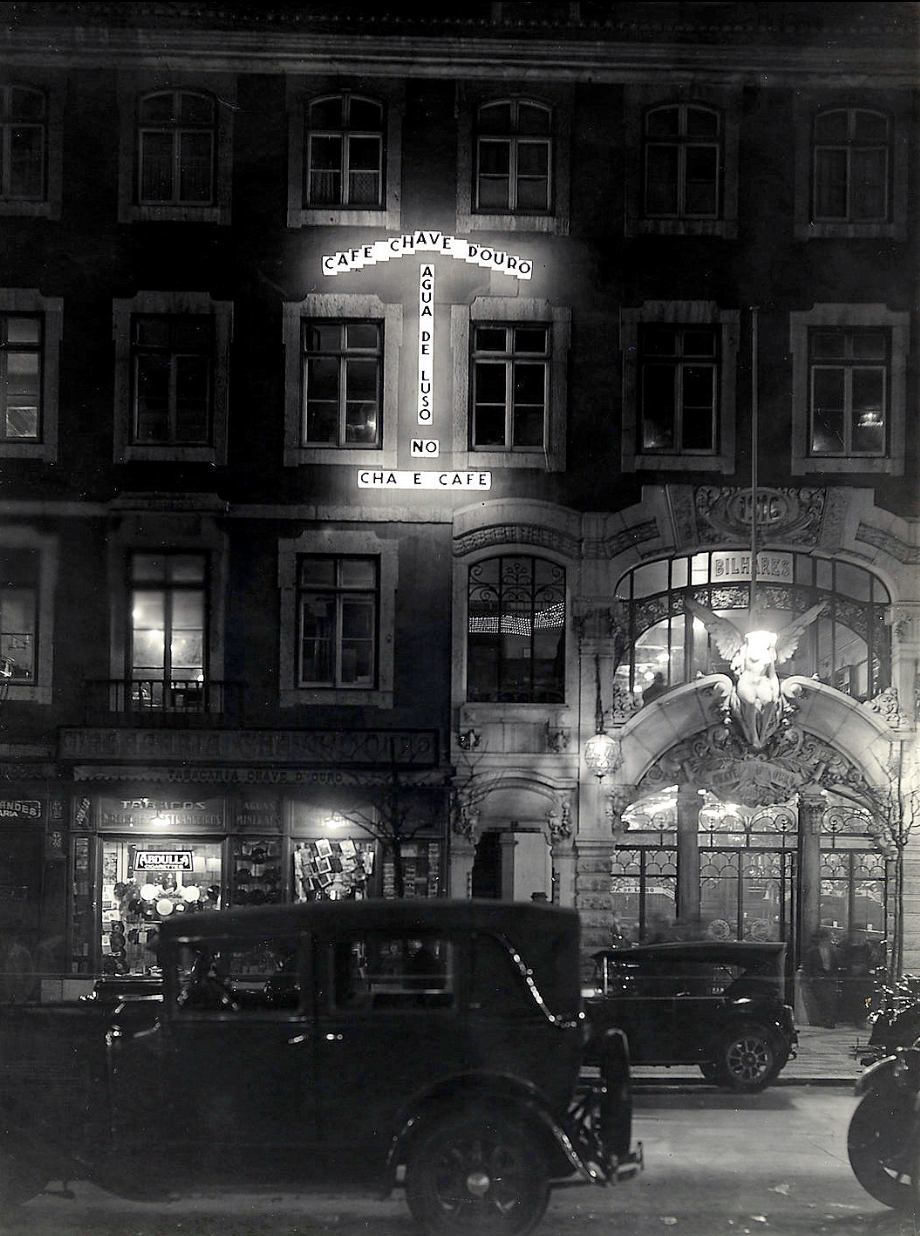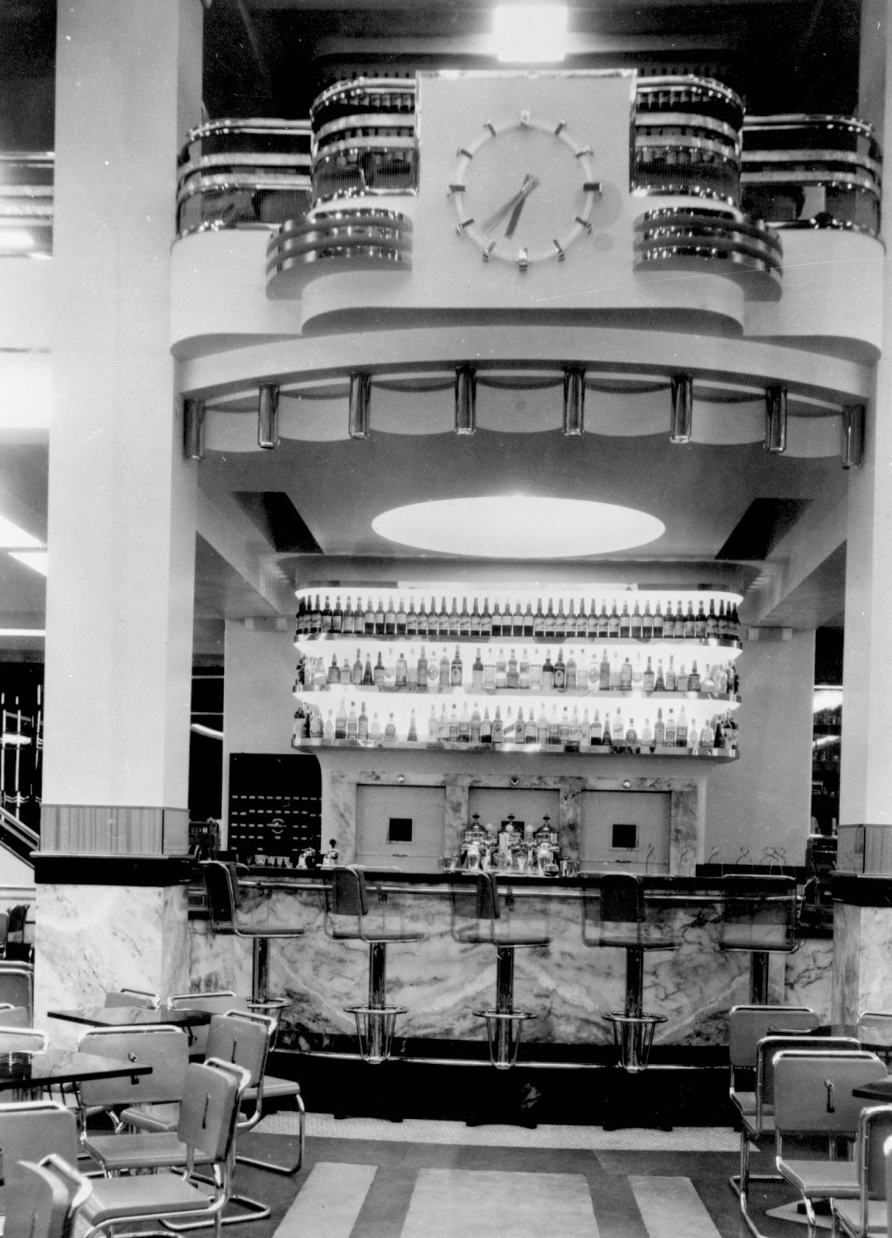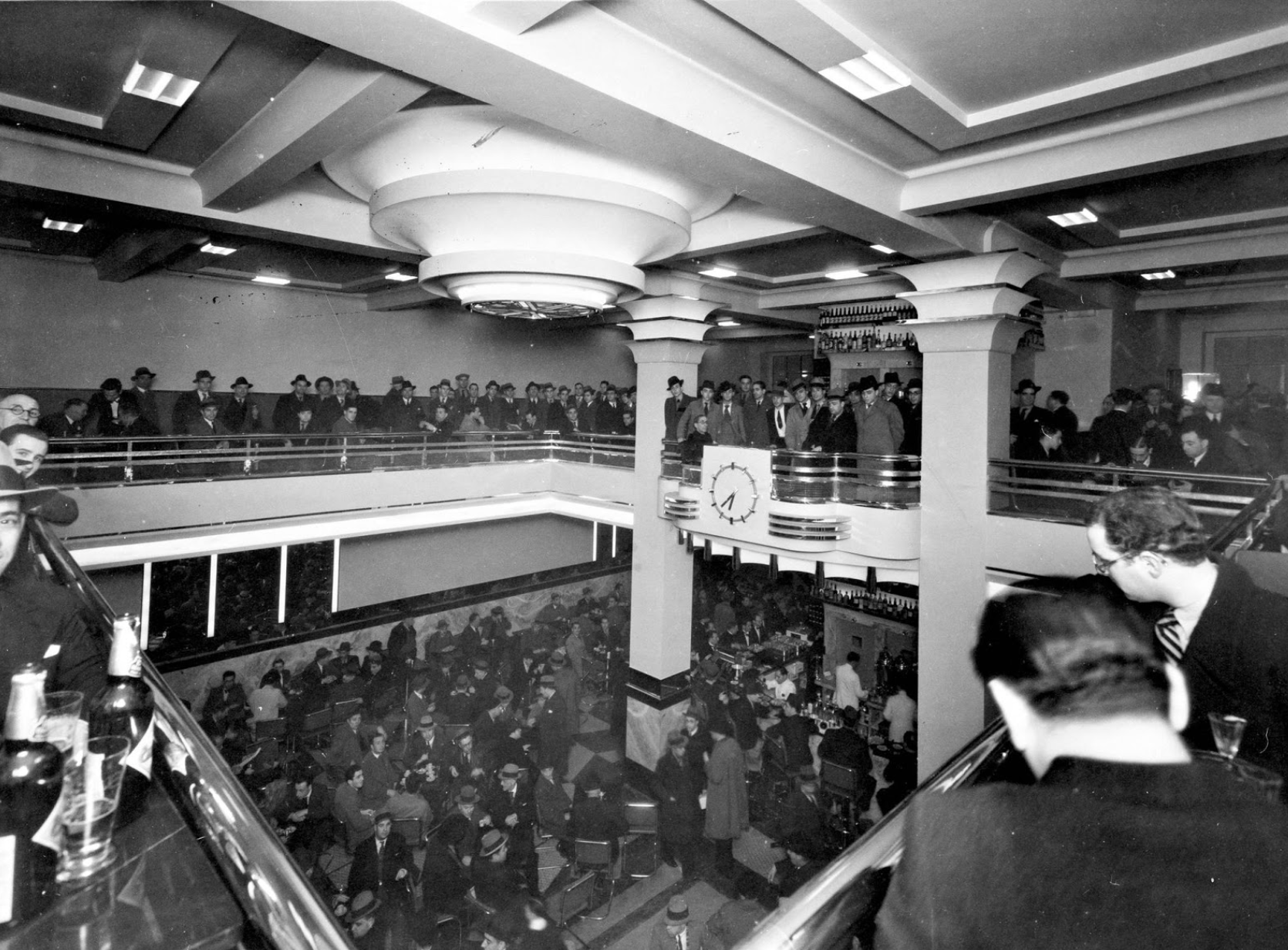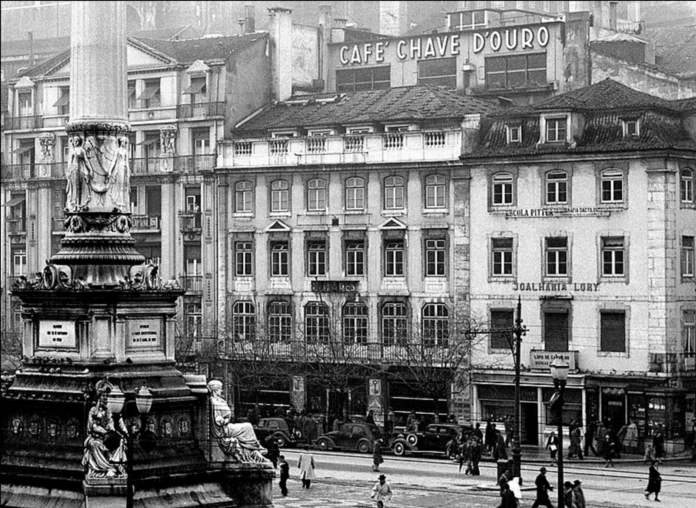I first heard about the Café Chave d’Ouro (which translates in Portuguese as “Golden Key”) in Neill Lochery’s riveting book Lisbon: War in the Shadows of the City of Light, 1939-1945. During WWII, well-to-do refugees from other parts of Europe filled the Lisbon cafes lining the squares, and Chave d’Ouro was one of the most popular. The photos of Chave d’Ouro in Lochery’s book intrigued me, and I decided learn more about this legendary cafe.
A Brief History of Europe’s Large Café Culture
In the second half of the 18th century, the thoughts of Voltaire and Rousseau spread rapidly. As these ideas circulated, Europe saw the rise of its first cafés. Some of these iconic establishments still stand today.
Antico Caffè Greco in Rome, for instance, was founded in 1760 on the chic Via Condotti. Café Florian in Venice began in 1720, established by Floriano Francesconi in St. Mark’s Square. Additionally, there’s Café Tomaselli in Salzburg, which dates back to 1703. This café was frequented by many musicians, most notably Wolfgang Amadeus Mozart.
Soon after, Lisbon embraced the café trend. However, local authorities were wary. They viewed these cafes as potential hubs for subversive activities. Cafés like Martinho da Arcada, established in 1782, and the first Nicola Café were monitored. Men under the Intendant-General, Pina Manique, kept a close watch.
Despite this scrutiny, the café trend was unstoppable. The 19th century saw these establishments flourish across Europe. They became symbols of cosmopolitanism and elegance.
Café Chave d’Ouro Opens Its Doors
Founded in 1919, Chave d’Ouro formally opened its doors on May 3, 1910, on a site previously occupied by a hardware and utility store of the same name. Spanning the entire area of a building, the café encompassed not only its mainstay—the coffee-serving section—but also included a restaurant, tea room, tobacconist, barber shop, and billiards.
The café’s entrance was known for its captivating art nouveau limestone sculpture of an angel with outspread wings, a masterful creation by Fausto Fernandes. But it wasn’t just the striking facade that drew the locals, it was also the ambiance and the café’s role as a nerve center for cultural and political activities.

As the 1920s rolled around, Café Chave d’Ouro rapidly became a favorite meeting spot for downtown Lisbon traders. It was during this era that the café began hosting musical afternoons. The renowned Tea Room became the heartbeat of these musical soirees, with regular performances from the Orquestra Ligeira da Emissora Nacional, at times directed by the illustrious Tavares Belo. Such was the café’s prominence that the radio station even broadcasted live dance music from there. The cafe’s significance was further underscored by the “Hot Club’s” inaugural musician meeting in 1948. How wonderful it would be to still be able to experience such an atmosphere today!

One of the founding visionaries behind Café Chave d’Ouro was Joaquim Fonseca Albuquerque. Later venturing out on his own, he established the equally celebrated Café Nicola in Rossio on October 2, 1929, which you can still visit today!
The café underwent a major facelift in 1936. Unfortunately, the angelic structure gracing the front entrance of the café was replaced by an Art Deco style, modernist facade and interiors, designed by the acclaimed architect Joaquim Norte Júnior.
Café Chave d’Ouro’s Turning Moment
Café Chave d’Ouro was not just about coffee and music. The 1940s and 50s saw it transform into a hot spot for opposition to the Estado Novo, also known as the Second Republic, the Portuguese authoritarian regime installed in 1933. This was also eventually what would lead to its downfall when the café witnessed a pivotal moment in May 1958.

Karl Pinto, in AMI
General Humberto Delgado, an opponent of the regime of António Salazar, who had been leading Portugal as Prime Minister and acting President since 1932, announced his candidacy for the Presidency. In a historic response to a question posed by a France Press journalist about what fate would befall Salazar won the elections, Delgado boldly proclaimed: “Obviously, I fire him!”
It is said that Salazar had the café closed the following year (1959), as he believed it was a center of “hate and dissolution.” The illustrious Café Chave d’Ouro then made way for a branch of Banco Nacional Ultramarino on May 22, 1961, which later became a branch of Caixa Geral de Depósitos.
The Coffee Legend Lives On
I had seen the name “Chave d’Ouro” a few times walking around Lisbon, so when I first came across the name in Lochery’s book, I thought for sure the café or some iteration of it might still be open. However, a curious twist in the café’s legacy is its connection to the coffee business, which is why I had seen the name around.
In the 1950s, a company named Vilarinho & Sobrinho emerged, reviving the Chave d’Ouro brand for marketing coffee. This brand was eventually acquired by Nutrinveste – SGPS SA in 1999, alongside the Nicola coffee brand. You will see both Chave d’Ouro and Nicola on many café awnings around Portugal to this day.
Today, modern storefronts exist where Chave d’Ouro once stood. Without knowing this story, it would be hard to believe that such a large café ever existed, but the legend of Café Chave d’Ouro lives on in photographs and the memories of those who worked there or frequented it. Its name lives on in the Chave d’Ouro brand and many cafés throughout the country that bear the same name.
To get a small taste of Chave d’Ouro’s former glory, you can visit Café Nicola, which still stands in the same square as when it opened its doors in 1929, 13 years after Cafe Chave d’Ouro first opened its doors.
Sipping a coffee on the terrace of Nicola, you can look across Praça Dom Carlos IV in Rossio, with the classic Teatro Nacional Dom Maria II at the north end and a marble column in the center with a bronze statue of King Pedro IV. Imagine the days of elegant cafés with chandeliers, Venetian mirrors, and men gathering to discuss the political issues of the day.
As George Steiner once wrote, “Draw the map of coffee shops and you will obtain one of the essential markers of the idea of Europe.” From its establishment in 1916 to its eventual closure in 1959, Café Chave d’Ouro’s made an indelible mark on Lisbon’s cultural, political, and social landscape. The café was more than just a place to sip coffee; it was an institution, a melting pot of ideas, and a witness to history.
So, the next time you see the phrase “Chave d’Ouro,” think about this legendary café and its 43 years of history.



Thank you so much for your research! I was precisely looking for that piece of information.
I am reading the book you refer and had the same curiosity. I am a portuguese, 61 old, and never heard about Chave d’Ouro coffeehouse at Rossio before ! I knew the brand quite well, as when I was a kid, there was a roastery in my street belonging to Vilarinho e Sobrinho and my first memories of Chave d’ Ouro come from that… the smell of freshly roasted coffee in tbe street !! (at Rua das Janelas Verdes, at Lisbon).
It’s so nice to see foreigners interested in our history and culture! Please be you all be very welcome to Portugal!
Thank you!!!
Dear Jorge,
We are so glad that you enjoyed the story of Chave D’Ouro. Thank you for sharing your childhood memories with us. We really love the incredible history of Portugal.